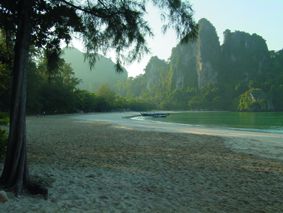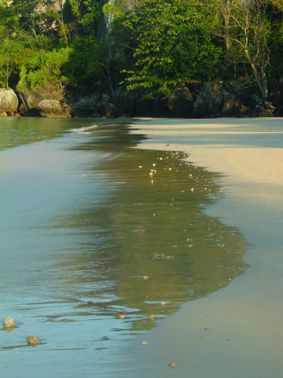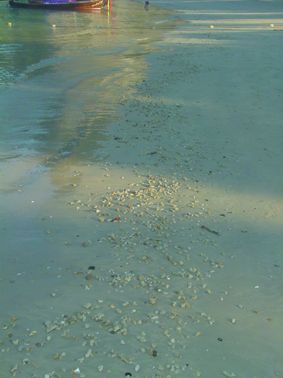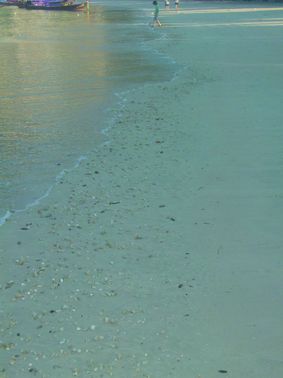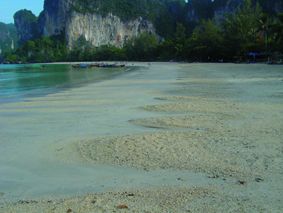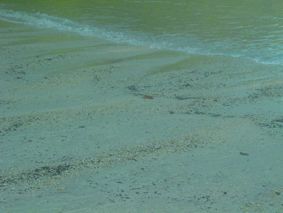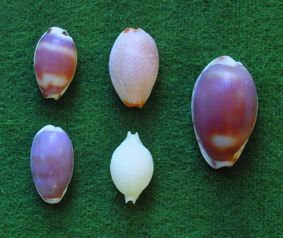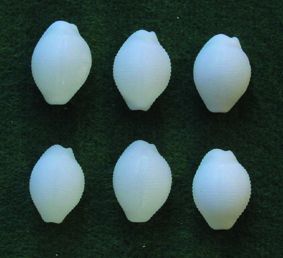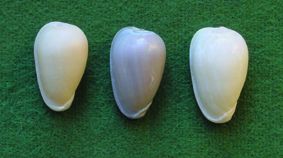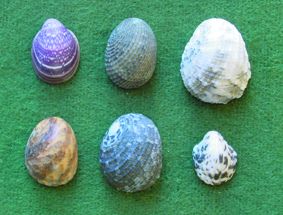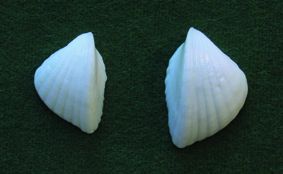|
“A few shells were washed over at the water’s edge, small and perfect, but everyone was too ecologically well behaved to pick these up.” Fowler, Karen Joy, 2004, The Jane Austen Book Club, p. 227. Introduction: Recently, walking along a beach in the early morning collecting a few shells, I was asked by a fellow beach-walker to “leave the shells there so that the rest of us can enjoy them”. Talking with him, it was clear that he thought that there was a finite and fairly small number of shells on the beach, and therefore it stood to reason that if I and others collected them, there would soon be none left. This is perhaps symptomatic of an increase in a kind of eco-puritanism which sees little difference between the collection of dead sea shells and the collection of birds’ eggs, and makes no distinction between activities which are harmful, and activities which do little or no harm and have greater benefit. I said that I thought that this underestimated the number of shells on the beach, and the rate at which they were washed up and destroyed; but he stuck to his guns, and I had to admit that I could not quote and had not read any research directly on the question. As I was staying there for the next three weeks, and have been aware of an increasing tendency for people to question the acceptability of collecting dead shells from beaches, we agreed that it would be interesting to put the question he had asked to the test by collecting shells every day and seeing whether the numbers collected got much smaller, as he thought, or stayed fairly constant as I thought. The results are far from conclusive - the experiment was not long enough (it would have been very pleasant to stay longer ….), the tidal cycle had unexpected effects, and the experimental design could have been improved. But it is hoped that the paper may be useful in stimulating interest in the question; the acceptability of collection depends on assessing impact against benefit, and we should be prepared to do this and base our decisions on evidence. The beach, and methods: The beach is at West Railay near Ao Nang (Krabi Province) in Southern Thailand, on the west (Andaman Sea) coast of the Isthmus of Kra (Figs. 1 and 2; Plate 1). It is a gently-sloping fine sand beach several hundred metres long, facing SW, with steep rocky cliffs at each end. The cliffs end abruptly at sea level; immediately offshore the predominantly sandy sea bottom shelves rather gradually, becoming about 10m deep one kilometre out, and 20m deep at three kilometres. Below the cliffs are areas with fallen blocks and boulders and a muddier more stable bottom. Tidal range varies between ca. 1m and 3m. The weather was generally rather calm at the time I was there, in December and January (2005/6); the main storms in this area usually happen in the summer months, during the monsoon. Along the high tide strandline, shells were concentrated mainly at the south end of the beach (Fig. 3), the commonest being small gastropods (mainly naticids, Vanikoridae, cowries and triviids); there were very few shells on the strandline in the northern and central parts of the beach. At the north end and in the central part of the beach, sparse lines of coral and shell fragments in the lower tidal zone just above the break in slope (Plate 2) produced small numbers of shells including larger gastropods and a range of bivalves. Towards the south end of the beach there were lines, cusps and low ridges of broken shell in the mid tide zone: the distribution varied from day to day, with a general tendency for lines and cusps (Plate 3) to form higher up, and for flatter ridges at right angles to the lines and to the wave front to form lower down (Plate 4). Most of the shell in these lines and ridges was very broken; more complete shells tended to be concentrated along small curved ridges on the cusps, in “swirl pockets”, and along the upper edges of the upper lines. The plan to collect and count shells in the same way every day was complicated by two factors – visitor disturbance and tidal variation. The beach was fairly heavily used by visitors during the day, especially at week-ends. They collected very few shells – I saw only two or three people collecting shells during the three weeks I was there, and a few children collecting shells to decorate sand castles; but they trampled the beach and the strandlines, especially in the upper part of the beach, making it much harder to see the shells. Conditions were good only in the early morning, when there was always an almost-undisturbed strandline (and it was cooler); but the amount of the lower beach that was accessible at that time depended on the state of the tide. I therefore decided to collect in the early morning, and to concentrate on the overnight high tide strandline and a band ca. 2m wide below it; for between one and two hours every morning this band was searched along the whole length of the beach. All complete cowries (Plate 5), triviids (Plate 6), marginellids (Plate 7), nerites (Plate 8), Lunulicardia hemicardis (Plate 9), and Siliqua spp. (Plates 10) found along this band were collected and removed from the beach. Broken shells were not collected or counted (shells which had lost more than 1mm from a margin by abrasion or chipping were classed as broken and not counted, as also shells perforated by abrasion). Results: Shells were collected daily for 19 days. One of two patterns had been expected – if there were relatively few shells on the beach and replacement was slow, the prediction was that numbers would drop rapidly; while if there were more shells and replacement was rapid, the prediction was that numbers would remain fairly constant. Reality (Figs.), as always, was more complicated. Cowries, the most abundant counted taxon, increased very significantly for the first eleven days, reduced very rapidly for the next four days, and then started to increase again. The other taxa were scarcer, and the results less clear, but it looks as if they show similar but not identical patterns. Results for Siliqua spp. are not shown as very few were found except in the lower tide zone (see below). Discussion of the results: There is a fairly clear inverse correlation between tide height (Fig. 4) and daily shell counts (e.g. Fig. 5): more shells were found on the high tide strandline during neap tides than during spring tides. The pattern is very clear for cowries, which were the commonest taxon collected; the other taxa show more irregular variation, presumably mainly as a result of smaller sample size, but none show a clearly different pattern. The variation that this creates makes it hard to discern longerterm trends, especially as the data cover only nineteen days – just a little more than a 14-day tidal cycle; however there is no rapid initial drop, as would be expected from an extreme “small numbers / low replenishment” model, and no indication that the numbers during the early part of the second cycle are lower than during the matching part of the first cycle. Few of the shells collected were very fresh even at the end of the period of collection, which argues against very rapid turnover. One possible explanation that is consistent with these observations, and which would also explain the rarity of very fresh shells (and also of fragile taxa) is that most of the shells found on the strandline are at least several months old, washed up onto the beach during the summer monsoon storms and accumulated in the ridges at the south end, where they are gradually abraded and broken. Consistent with this suggestion is that the fresher and more complete shells in the shell debris area were in similar slightly worn condition. During neap tides, it is suggested, the wave edge spends a longer time in the mid tide zone washing over and sorting the shell ridges at the south end, winnowing out small complete and relatively light shells and leaving them along or close to the high tide strandline. During spring tides, the wave front spends a shorter time in the mid tide zone and the high tide strandline is some distance above the shell ridges, and so many fewer complete shells end up there. If this explanation is right, the lack of any clear decline in numbers collected, even though large numbers were removed (e.g. around 800 cowries and triviids), suggests that there are very large numbers of shells in the shell debris ridges, and that the beach can probably sustain considerably more collection from the strandline than is happening at present without causing much damage to the enjoyment of others. However, this conclusion can only be tentative given the shortness of the experiment. Ideally the experiment would last over several tidal cycles, and would test whether most of the shells in the strandline are much fresher just after the monsoon storms, as would be predicted if the rate of replacement is as high as the explanation given above suggests. Also the design of the experiment would be improved by counting but not removing other taxa as a control. Other observations: As already remarked, shell was scarcer at the north end and in the middle of the beach. Such shell as was found there was mostly in the lower tidal zone, in rather diffuse lines of shell, broken shell and small lumps of broken coral. While not collected as part of the experiment reported above, it is worth commenting that these shells differed markedly from the shells at the south end of the beach; there were a few larger shells in fresh condition, including some middle-sized and quite heavy strombids, a very large Turritella, and two large naticids; more bivalves including donacids and mactrids and fragile bivalves such as Siliqua spp. in very fresh condition; and small numbers of nerites and cowries in fresher condition than any at the south end. This was also the only part of the beach where moribund shells were found. It seem likely that these are very recentlydead shells, and are the calm-season input to the beach. Smaller reasonably strong shells probably then move southward and upward, arriving abraded in the shell ridges; fragile shells are broken on the way; and heavier shells stay in the lower tide zone except when carried up by storms onto the storm ridge above the extreme high water mark. It would be interesting to look at the effect of collection on this component of the input to the beach, which would require collecting at low tide rather than from the high tide strandline. Conclusions and general discussion: Though it is necessary to be cautious for the reasons discussed, the results of this experiment suggest that for this beach, the removal of fairly large numbers of shells from the high tide strandline over a fairly short time caused no very immediate decrease in the numbers of shells on the beach the next day, and thus little damage to the enjoyment of other visitors. It has also been suggested that removing dead shells may be harmful because of the removal of nutrients, and because removing gastropods may deny hermit crabs shells to live in. For this beach neither seems to be a likely problem – it is a limestone area, and hermit crabs are relatively scarce; very few were seen even though apparently suitable shells were reasonably abundant. Though to many shell collectors this probably seems unsurprising, it is important for us to realise that it is doesn’t look the same way to many others. To respond to this, we need to do two things. The first is to be willing to do experiments of the kind described here to assess any damage we may be doing and provide evidence to allow us to balance harm – in this case probably very low – against benefit, and show others that we are willing to do this (funders please note: I would be happy to accept a grant to live on a Thai beach for a year …) Where harm seems likely to be done – as is almost certainly the case with some live collection – we need to be clear about the need for restraint. The second is to be clear about benefit. Responsible collection increases knowledge and understanding of the natural world, and also increases public interest and enjoyment; and it is on these, and public support, that effective conservation ultimately depends. Call for feedback: I would welcome any comments from members on the approach used or on these conclusions. Has anyone else carried out a similar experiment, perhaps closer to home? Or is anyone aware of reports of other observations bearing on this question? I would also welcome comments especially from members who have collected from a favourite beach over a number of years and who have relevant personal observations. Thanks: Many thanks to the beachwalker who provided the initial impetus for this project; to Rosemary who put up with antisocial earlymorning shell collecting and defended piles of shells from grandchildren; and to Jacqui Huntley, Jan Light, Anthony Long and Jane Sidell for advice and comments on drafts. |
Fig. 3: Sketch plan of distribution of shells on West Railay beach, December 2005 – January 2006, and suggested transport mechanisms.
Figs. 5-9: Counts of shells collected each day, 16 December 2005 (Day 1) – 3 January 2006 (Day 19):
Plate 1 View of West Railay beach, early morning looking south.
Plate 2a West Railay beach: sparse lines of coral and shell fragments in the lower tide zone, at the north end of the beach.
Plate 2b West Railay beach: sparse lines of coral and shell fragments in the lower tide zone, at the north end of the beach.
Plate 2c West Railay beach: sparse lines of coral and shell fragments in the lower tide zone, at the north end of the beach.
Plate 3 West Railay beach: cusps in the upper mid tide zone at the south end of the beach.
Plate 4 West Railay beach: ridges in the lower mid tide zone at the south end of the beach.
Plate 5 Cowries collected from West Railay beach
Plate 6 Triviids collected from West Railay beach
Plate 7 Marginellids collected from West Railay beach
Plate 8 Nerites collected from West Railay beach
Plate 9 Lunulicardia hemicardia collected from West Railay beach
Plate 10 Siliqua spp. collected from West Railay beach |
How much harm does collecting dead shells from beaches do?
Issue
10
Page
10

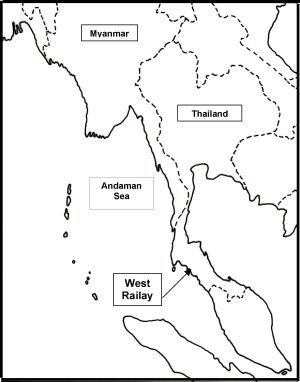 Fig. 1: General location map showing location of study area..
Fig. 1: General location map showing location of study area..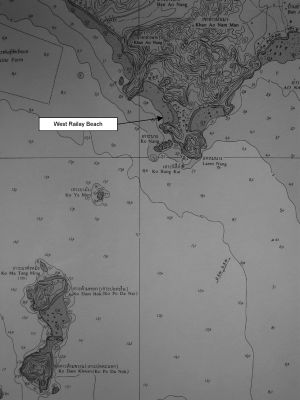 Fig. 2: Chart of the West Railay beach and surrounding area, from Thai Navy Hydrographic Chart (ca. 1930, before the area was developed).
Fig. 2: Chart of the West Railay beach and surrounding area, from Thai Navy Hydrographic Chart (ca. 1930, before the area was developed).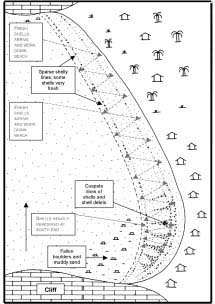
 Fig. 4: Height of last high tide before collection, 16 December 2005 (Day 1) – 3 January 2006 (Day 19). Data from Easytide for Ko Nang, Krabi; heights above ELWS.
Fig. 4: Height of last high tide before collection, 16 December 2005 (Day 1) – 3 January 2006 (Day 19). Data from Easytide for Ko Nang, Krabi; heights above ELWS.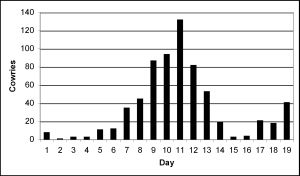 Fig. 5: Cowries.
Fig. 5: Cowries.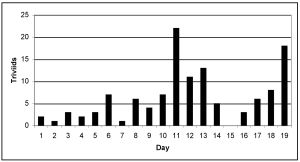 Fig.6: Triviids.
Fig.6: Triviids.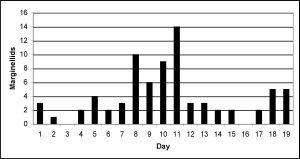 Fig.7: Marginellids.
Fig.7: Marginellids.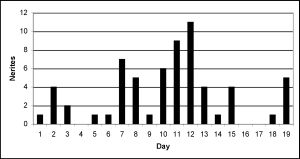 Fig.8: Nerites.
Fig.8: Nerites.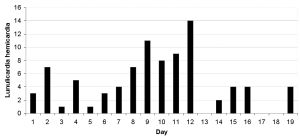 Fig.9: Lunulicardia hemicardia.
Fig.9: Lunulicardia hemicardia.